Oh, My Aching Head! – History of Headrests
PRIMITIVE - Friday, February 13, 2015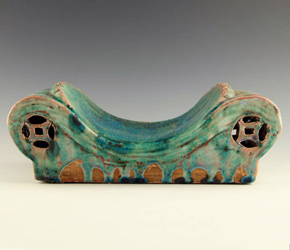 |
|
By Misaki Imagawa
You know the feeling; you’ve been up since the crack of dawn, worked a full day and then indulged in one, two, or simply too many drinks with your friends. You stumble back home with nothing but blissful sleep on your mind. Your sweet bed beckons you with promises of rest and comfort. You fall into its welcoming embrace and...crack! Your head smacks down painfully on a stone pillow. Did I forget to mention that you’ve been transported to another place and time; and let’s just say a WHOLE different set of ideas when it came to pillows?
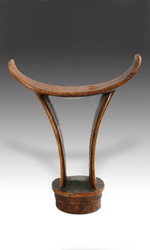 |
|
PRIMITIVE ID# A0607-243 |
Back before modern stuffed pillows emerged, when the concept of headrests first began in ancient civilizations, wooden or stone pillows were quite common all across the world. It should be noted, the main function of these pillows was not for comfort as we know it today, but instead, as a means to raise the head so insects could not crawl into your mouth, nose, ear, or hair. It seems humans didn’t really fancy creepy-crawlies even 9000 years ago, when the earliest known headrest was made.
Some of the oldest and most famous headrests were found in ancient Egyptian tombs. Pharaoh Tutankhamen was laid to rest with eight of them, made of extensively decorated wood, ivory, and alabaster. It was believed that the head was the essence of life, and therefore holding it up, even in death, was crucial. When not supporting the head of corpses, headrests were thought to increase vigor and keep demons away. For this reason, many headrests were decorated with images of Bes or Taweret, two protective gods with the power to banish evil from the dark night. Headrests were also considered significant because of a symbolic connection with the sun. When the sun set, the head was laid to rest on the pillow and when the sun rose, so did the head. Having a hard pillow must have certainly discouraged current day sleeping habits of burrowing deeper into the fluffy comfort as the sun shines brighter.
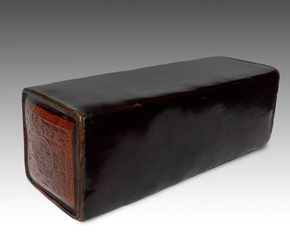 |
|
Pillows were also used in Asia. Just like Egypt, these too were made of hard, stiff materials. In Japan, headrests were made of wood or woven in bamboo or rattan; their main function was mostly to protect hairstyles. From a Samurai’s hair knot to the elegant coiffures of noblewomen and geishas, headrests kept both men and women from having to reset their hair every day. These ‘pillows’ however were little more than neck supporters and it took some time to master the art of sleeping without messing up your hair. Geisha-in-training, called maiko girls, learned this the hard way; wet, sticky rice was spread all around their pillows so that if they failed to keep their hair off the floor, they would wake up with rice glued to them – definitely not something you’d want to deal with first thing in the morning!
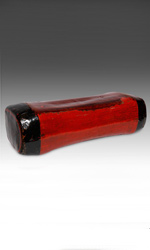 |
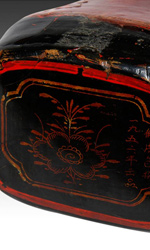 |
|
In China, they had a very different reason for sleeping on hard pillows. They believed that soft substances stole energy and vitality from the body and were bad for blood circulation; not to mention being ineffective at driving away demons. The Chinese used a variety of materials to make their headrests: bamboo, jade, porcelain, ceramic, wood, and bronze. Ultimately, porcelain became the most popular and widely used material. These were all so highly decorated that some people mistake them for family heirlooms. Depictions and engravings of animals, plants, humans, mountains, water and even geometric shapes adorned the pillows.
Wood and leather bound headrests were often given a masterfully lacquered finish. The extensive attention to detail and decoration suggests that the headrests held more than a visual or physical significance. In fact, the ancient Chinese believed pillows had the power to influence and guide dreams, which were viewed as omens. Headrests mediated the space between the consciousness and unconsciousness, reality and illusion. In fact, they were considered so important that many headrests accompanied their owners into death.
In sub-Saharan Africa, pillows share many similar functions as elsewhere in the world. Much like in Japan, African headrests protected elaborate hairstyles and headdresses worn by tribal members. Often piled up into crown or turban shapes, some hairstyles held ornaments made of iron, clay, and copper, and were then embellished with cowry shells, beads and cones. Great care and effort went into setting up such hairstyles because they were symbols of prestige and status. Headrests allowed one to maintain the style for weeks or even months on end. The Eastern concept of the pillow holding spiritual importance was also shared by many African tribes. Among the Chokwe people of Central Africa, headrests are called ‘pillows of dreams’ and are used during divination processes. The Shona people of Zimbabwe believe that a person walks and communes with their ancestors in a dreamscape. Therefore, the headrest was considered of great importance for forming a connection between the living and spiritual world. In many tribes, the headrest is an object of great practical, spiritual and prestigious value. Just like in ancient China, headrests would join their owners into the grave, especially in the case of tribal leaders.
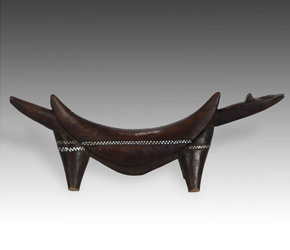 |
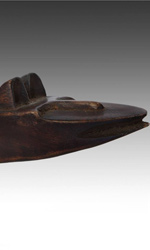 |
|
It occurs to me now – pillow fights might have been quite a deadly game in ancient times! However, just because many headrests throughout history were made of hard materials, it does not necessarily mean softer pillows did not exist. In many cultures thin mats filled with straw were placed over hard headrests to create softer elevated platforms. The Ancient Greeks and Romans said, ‘to hell with hairstyles, energy and demons,’ as they reclined on pillows filled with feather, reed or straw, but these softer pillows were usually reserved for the higher classes. Commoners who could not afford softer pillows improvised and stuffed rice bags with materials like dried leaves that simply disintegrated over time. Finally, if someone preferred something harder, they might even go out and select rocks from the riverbank. Who knows, maybe they knew something about hard pillows that we don’t understand today. One thing is certain, most people wouldn't care to return to the hard pillows of old.
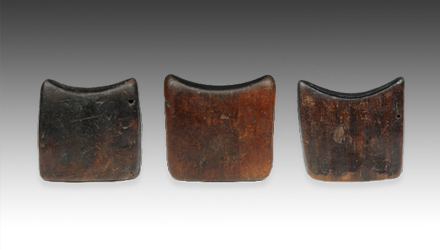 |
Download this Article: Oh My Aching Head.pdf